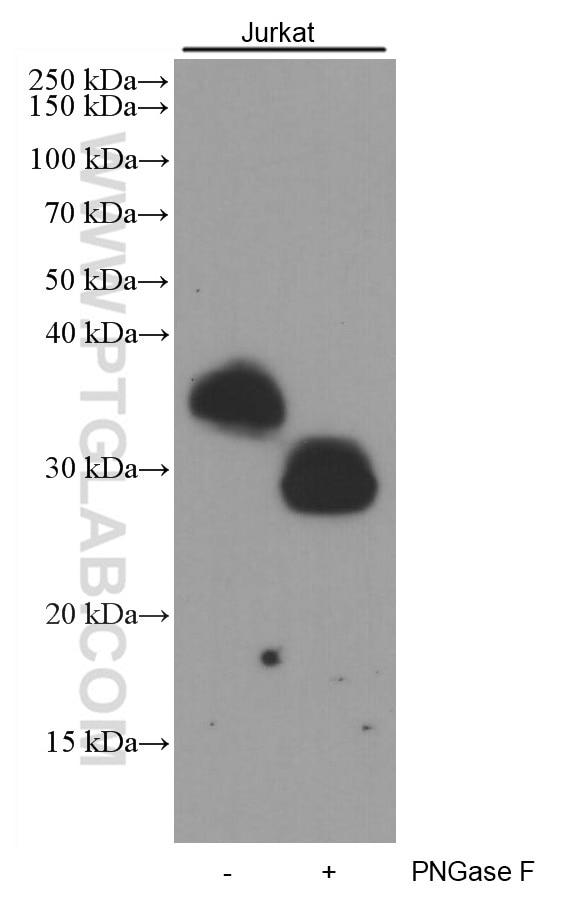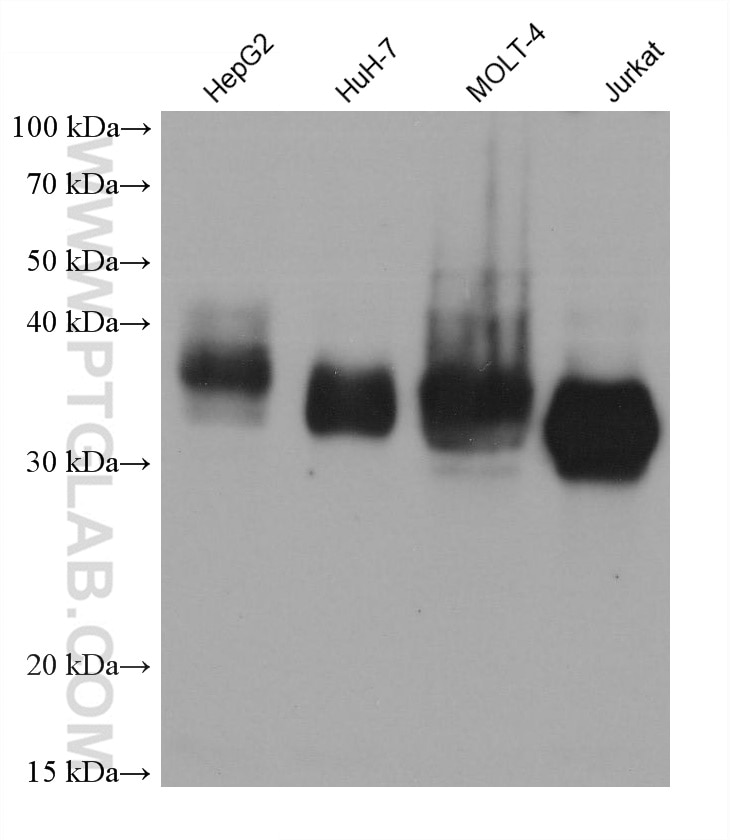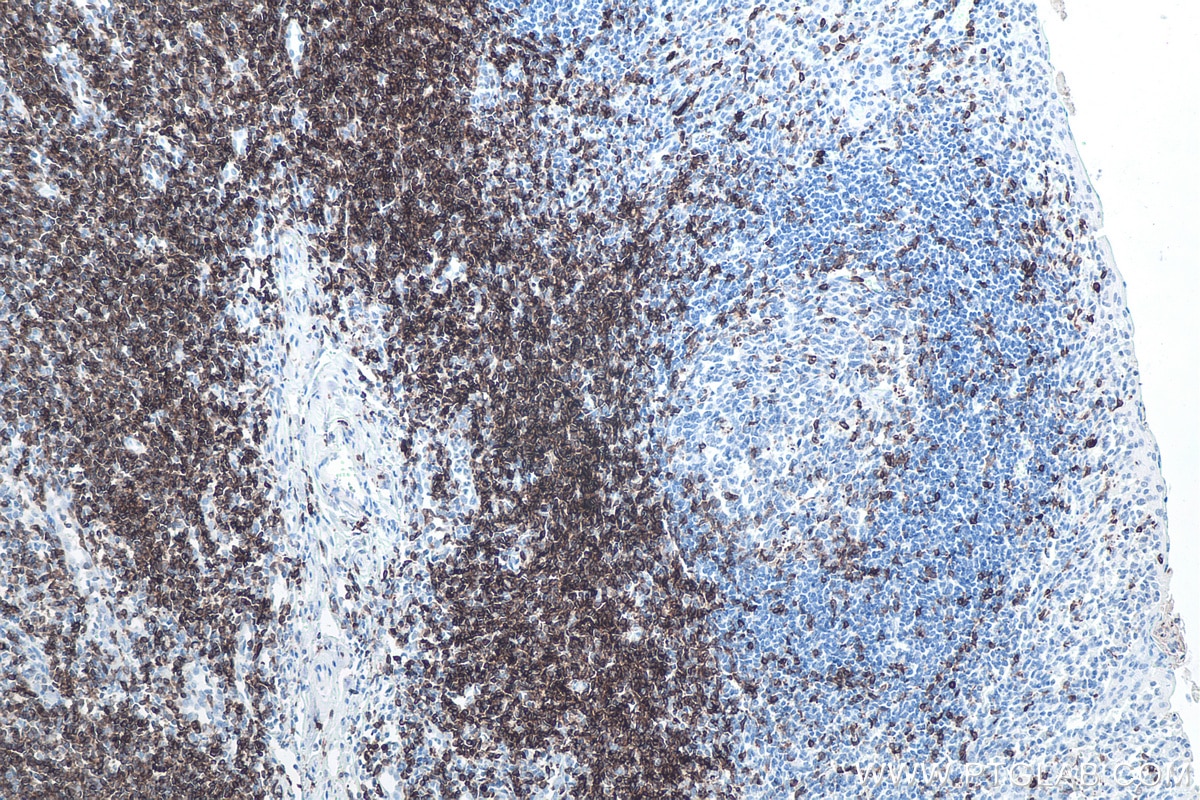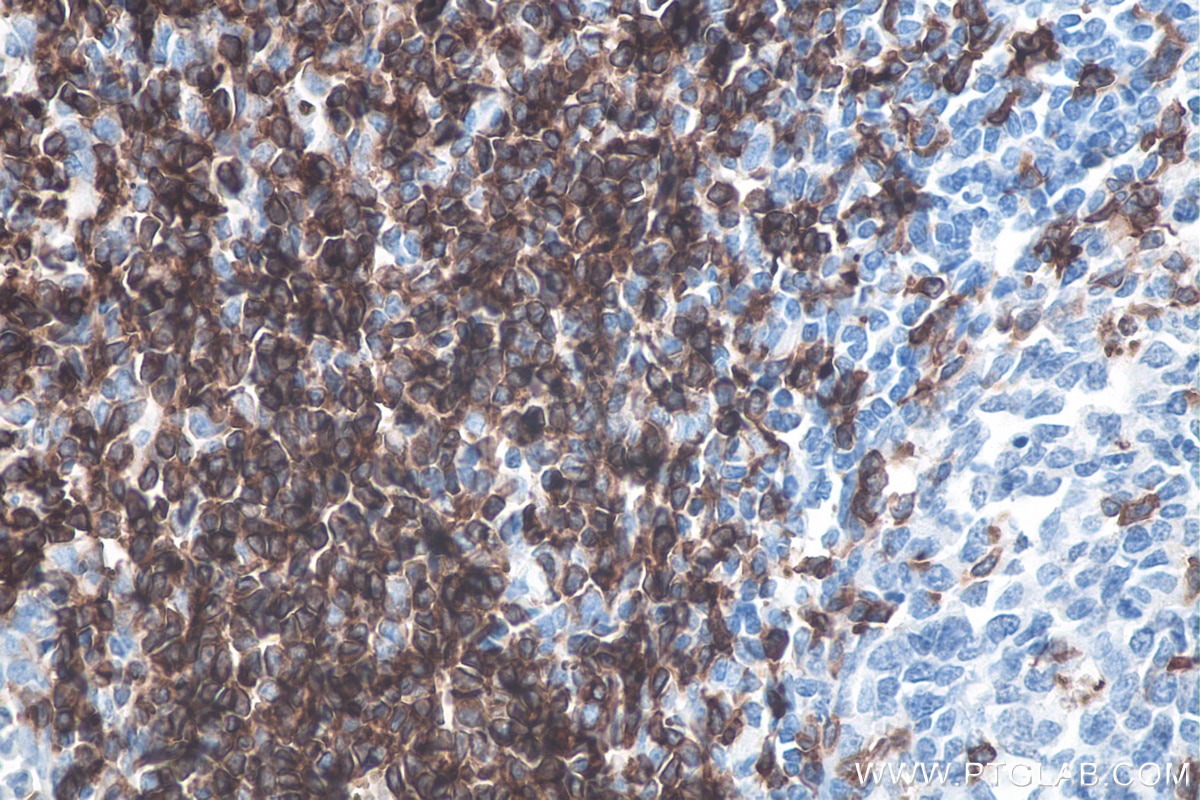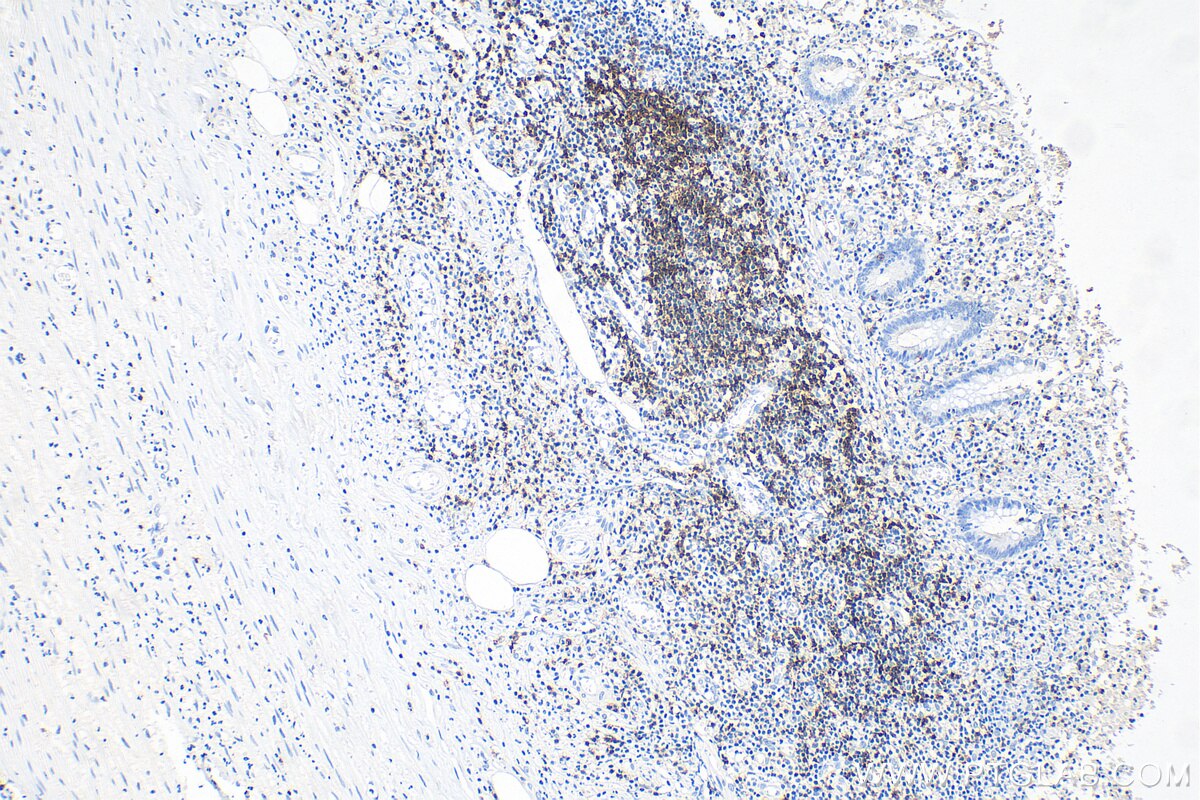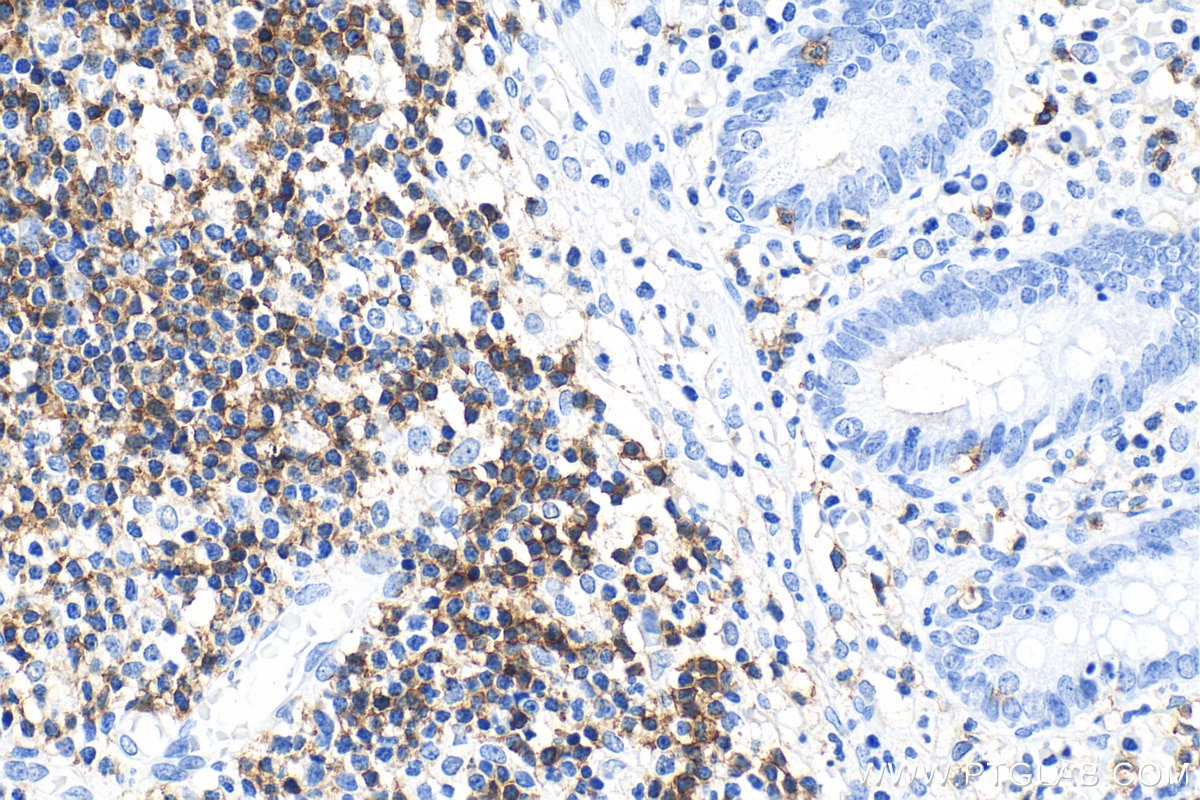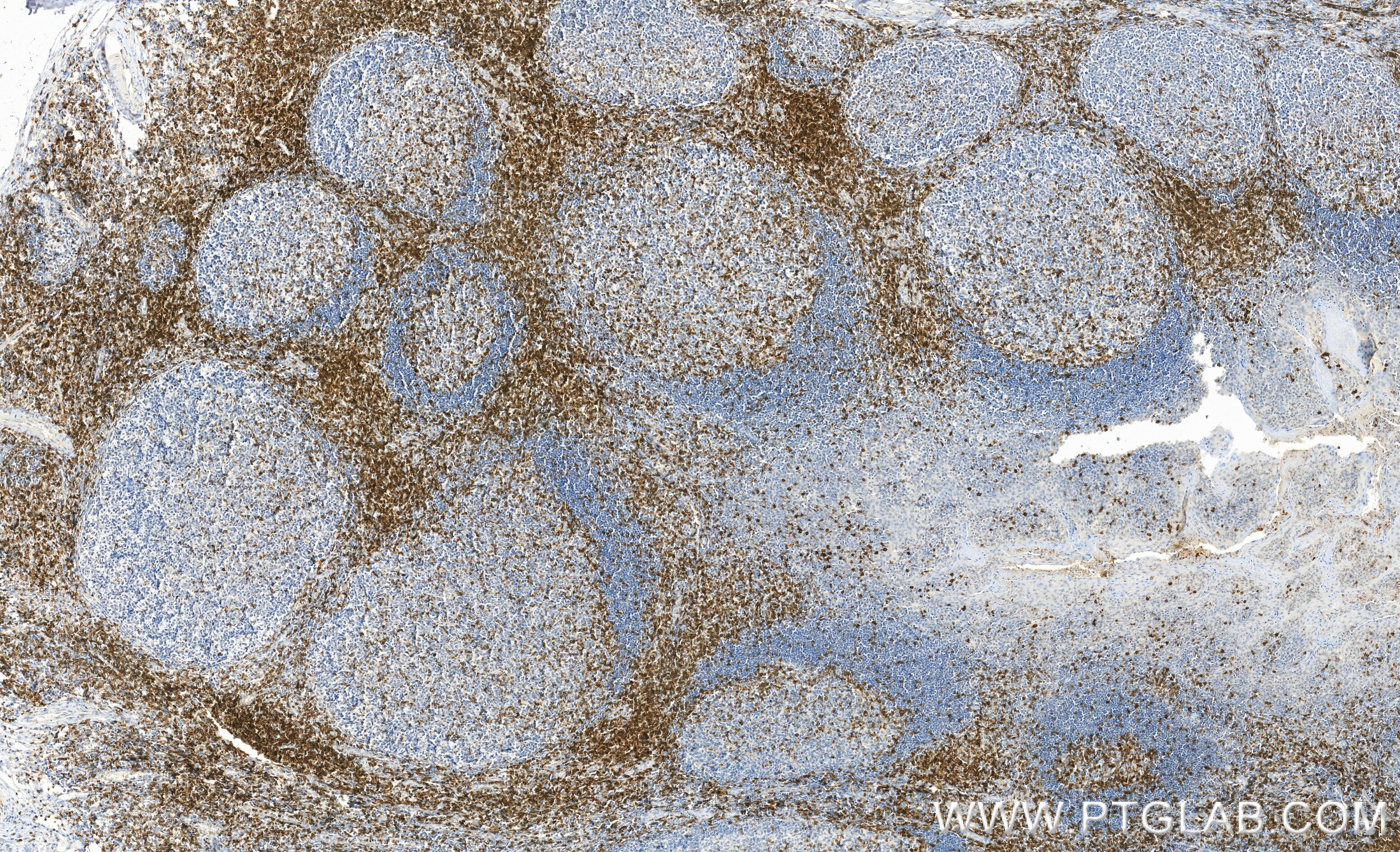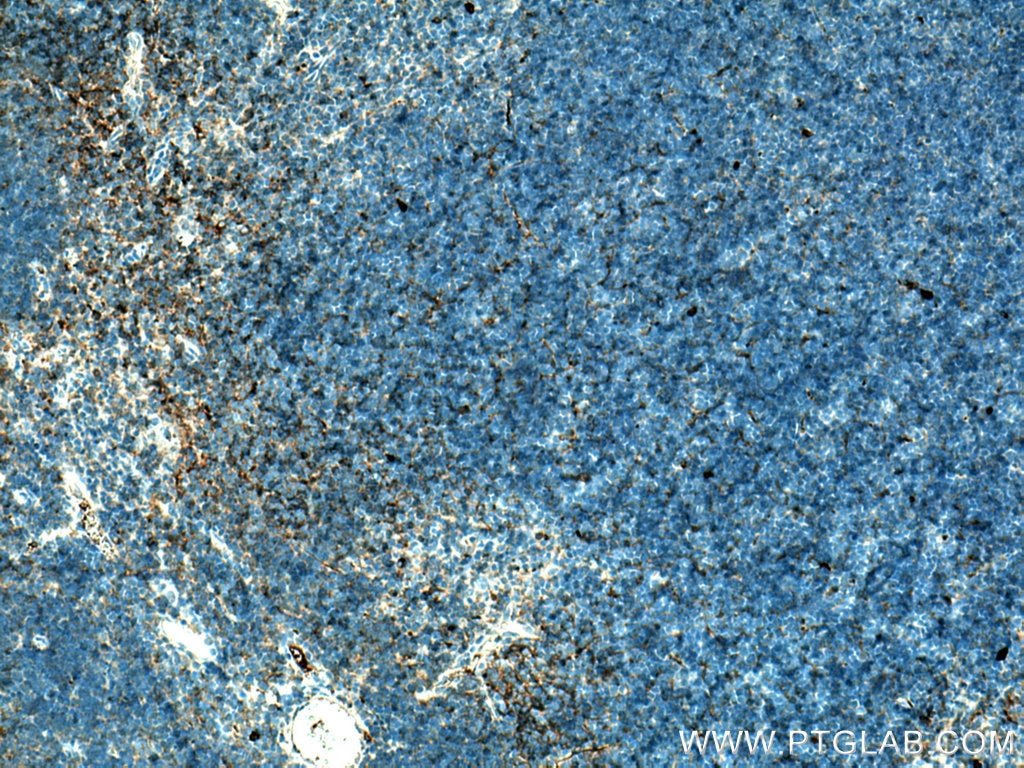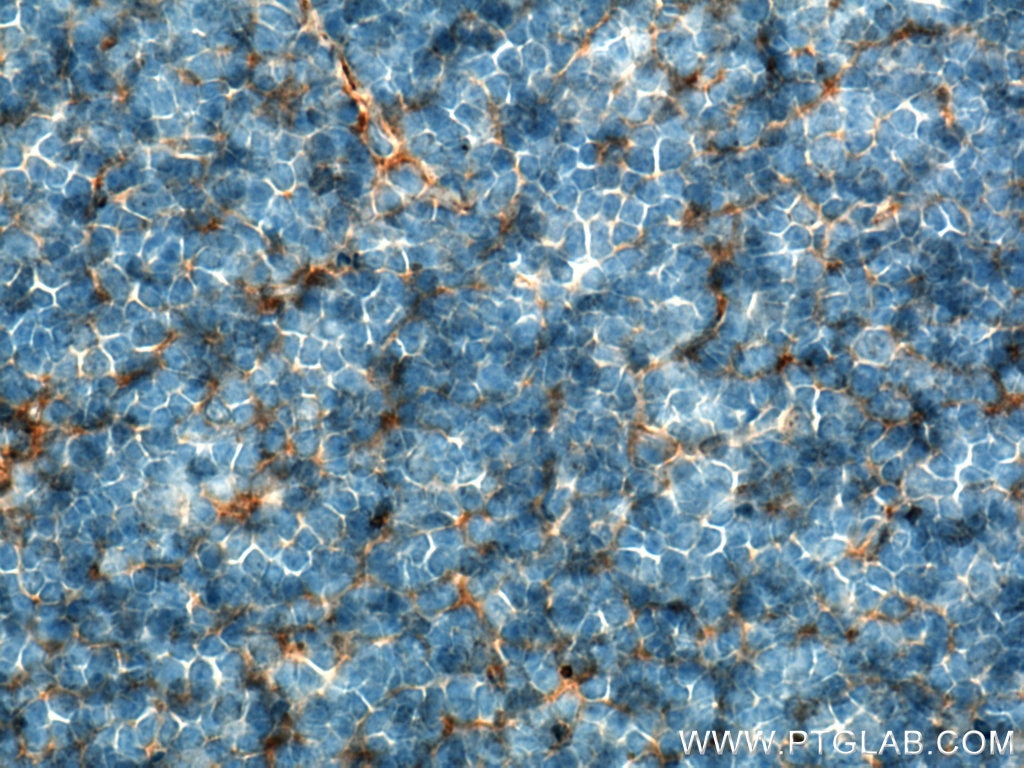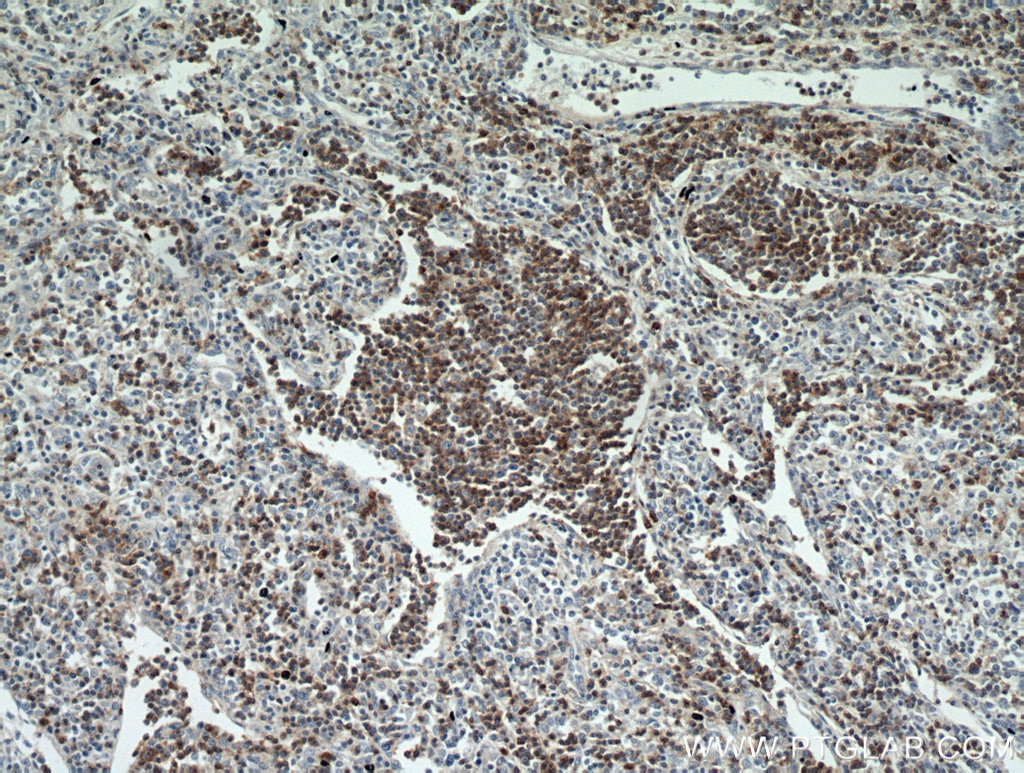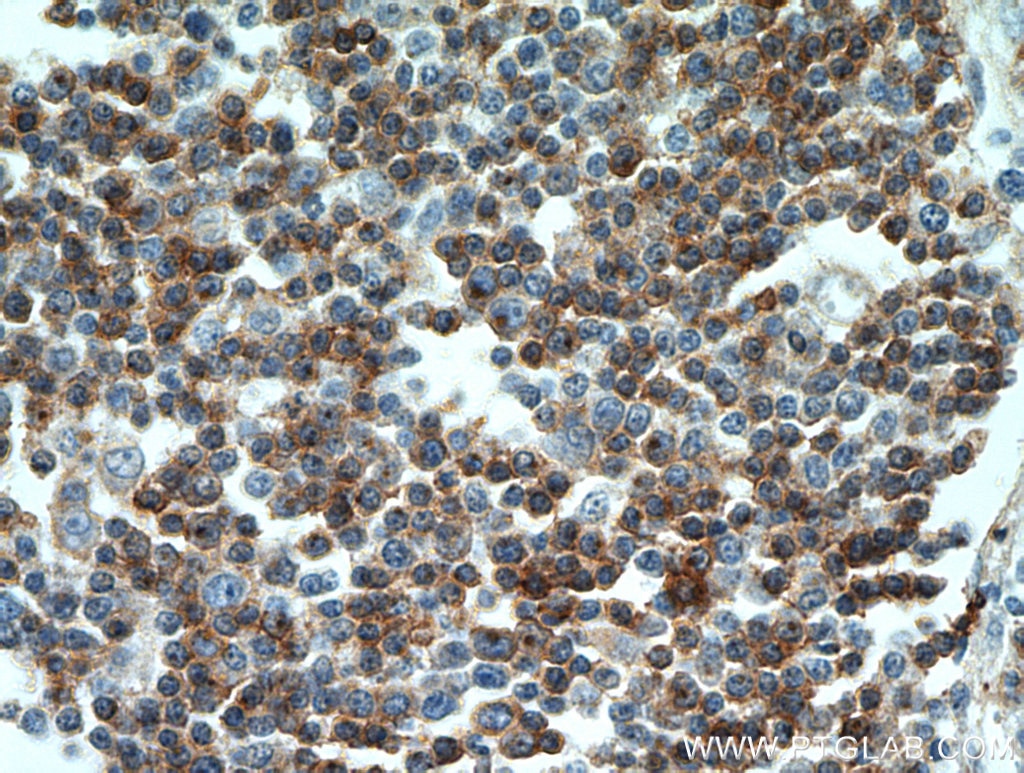CD7 Monoklonaler Antikörper
CD7 Monoklonal Antikörper für WB, IHC, ELISA
Wirt / Isotyp
Maus / IgG1
Getestete Reaktivität
human, Maus
Anwendung
WB, IHC, ELISA
Konjugation
Unkonjugiert
CloneNo.
2A4E6
Kat-Nr. : 60209-2-Ig
Synonyme
Geprüfte Anwendungen
| Erfolgreiche Detektion in WB | Jurkat-Zellen, HepG2-Zellen, HuH-7-Zellen, MOLT-4-Zellen |
| Erfolgreiche Detektion in IHC | humanes Tonsillitisgewebe, humanes Appendizitis-Gewebe, humanes Lymphomgewebe, Maus-Thymusgewebe Hinweis: Antigendemaskierung mit TE-Puffer pH 9,0 empfohlen. (*) Wahlweise kann die Antigendemaskierung auch mit Citratpuffer pH 6,0 erfolgen. |
Empfohlene Verdünnung
| Anwendung | Verdünnung |
|---|---|
| Western Blot (WB) | WB : 1:1000-1:4000 |
| Immunhistochemie (IHC) | IHC : 1:1000-1:4000 |
| It is recommended that this reagent should be titrated in each testing system to obtain optimal results. | |
| Sample-dependent, check data in validation data gallery | |
Produktinformation
60209-2-Ig bindet in WB, IHC, ELISA CD7 und zeigt Reaktivität mit human, Maus
| Getestete Reaktivität | human, Maus |
| Wirt / Isotyp | Maus / IgG1 |
| Klonalität | Monoklonal |
| Typ | Antikörper |
| Immunogen | CD7 fusion protein Ag1805 |
| Vollständiger Name | CD7 molecule |
| Berechnetes Molekulargewicht | 240 aa, 25 kDa |
| Beobachtetes Molekulargewicht | 34-36 kDa |
| GenBank-Zugangsnummer | BC009293 |
| Gene symbol | CD7 |
| Gene ID (NCBI) | 924 |
| Konjugation | Unkonjugiert |
| Form | Liquid |
| Reinigungsmethode | Protein-G-Reinigung |
| Lagerungspuffer | PBS with 0.02% sodium azide and 50% glycerol |
| Lagerungsbedingungen | Bei -20°C lagern. Nach dem Versand ein Jahr lang stabil Aliquotieren ist bei -20oC Lagerung nicht notwendig. 20ul Größen enthalten 0,1% BSA. |
Hintergrundinformationen
CD7, also known as Leu-9 or GP40, is a 40-kDa single-pass type I transmembrane glycoprotein belonging to the immunoglobulin superfamily. CD7 is expressed on thymocytes, T cells, NK cells, and cells in the early stages of T, B, and myeloid cell differentiation (PMID: 10530432). It is one of the earliest antigens to appear on cells of the T-lymphocyte lineage (PMID: 3501369). CD7 plays a significant role in T-cell and T-cell/B-cell interactions during early lymphoid development. It is involved in the regulation of cell signaling and biology, including T-cell activation, proliferation, and the expression of interleukin-2 receptor alpha (IL-2Rα) (PMID: 11485208). CD7 is not only a marker for T-cells but also has functional implications in immune cell interactions and adhesion. It can provide co-stimulatory signals and is associated with CD3 and CD45, participating in T-cell activation (PMID: 7523512).
Protokolle
| PRODUKTSPEZIFISCHE PROTOKOLLE | |
|---|---|
| WB protocol for CD7 antibody 60209-2-Ig | Protokoll herunterladen |
| IHC protocol for CD7 antibody 60209-2-Ig | Protokoll herunterladenl |
| STANDARD-PROTOKOLLE | |
|---|---|
| Klicken Sie hier, um unsere Standardprotokolle anzuzeigen |
